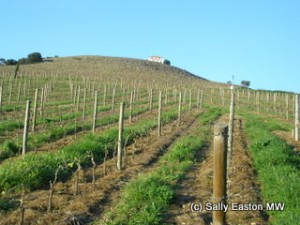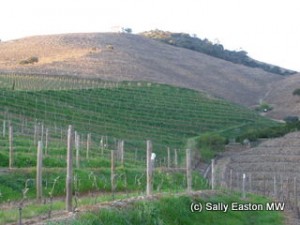The greening of the Douro Valley

Quinta do Roeda
A decade ago, the Douro vineyards were a brown, bare-earthed environment, where patches of dry, Mediterranean climate-adapted scrubland juxtaposed with bare earth beneath vines. As Rui Cunha, of Secret Spot wines said “the notion of a good vineyard was one without vegetation.”
But whilst perception may be of an arid, brown environment, the Douro is not uniformly dry, nor brown. Rainfall is around 900mm in the west, near Regua, plentiful for vine growth, to around 400m in the east near the Spanish border, which is extremely dry. This means there is enough moisture to make powdery mildew an annual issue and downy mildew a less regular issue in much of the valley, so spraying to keep vineyards clean was normal practice.
This picture is changing as producers get to grips with reducing regular herbicide use, farming more sustainably, and looking for options to deal with arguably the region’s biggest problem – erosion.
Combating soil erosion is crucial not only because slopes are steep, but also because vineyards are pretty much the only form of livelihood for many subsistence farmers, so its preservation is essential. Paul Symington, managing director of Symington Family Estates, makers of Graham’s, Cockburn’s, Warre’s, Dow’s ports, summarised the Douro environment as one of “unproductive soil, steep slopes and a monoculture of 44,000 hectares of vineyards. It’s a tough environment.”
An attempt to make it less tough in the 1980s saw the development of earth-banked terraces – patamares – which may have been easier to cultivate using machines, but the bare-earth slopes are hugely susceptible to erosion during winter rains and summer winds. Cunha said these terraces were “two rows of vines, and an earth slope without stone. But you get erosion, and you get irregular maturity on the two rows: hot sun on outside, higher humidity on inside. So you need more herbicide, which results in more erosion” in a vicious cycle.
And with the modern ‘up and down’ planting, Cunha said “more than 20% slope and you get erosion, or it’s difficult for a tractor” to pass.
It is the original stone terraces with wall and flat vineyard surface that are the best ‘anti-erosion’ terracing system, but there are not so many of these.

With and without cover crop
Cover crops are the simple solution of combating soil erosion. Plant roots help bind the soil, and provide a close-to-ground wind break. Symington said “we thought the cover crop would compete with the vine for humidity. We have to mow it, and in summer it dies down. There’s a lot of wind in summer every day, and the dry stubble breaks up the wind and doesn’t let the wind erode so much.”
At the Fladgate Partnership, makers of Taylor’s, Croft and Fonseca ports, their viticulturist Antonio Magalhães said “the wind helps to keep vegetation healthy, but causes havoc on un-rooted soils.” They are using red clover because “in winter it protects against erosion. It keeps more life and water in the soil. At the time of budburst, we need the water for the vine, so we mow the vegetation. Then at the end of April, beginning of May, the vegetation dies naturally. It protects against erosion and doesn’t need water.“
The dying down of the cover in summer is key so as not to compete with the vines for reserves of water. Alves de Sousa of Quinta da Gaivosa said his cover crop was “ideally spontaneous vegetation, or we use something from the bean family to fix nitrogen, or with a cereal that doesn’t compete with vineyard needs because the cereal dies in summer.”
The roots of mown cover crop still help to bind the soil together, reducing susceptibility to erosion. Plus all this cover crop is encouraging bugs, which allows a more natural approach to disease prevention and cure. Cunha added “so far we’ve planted grasses to fight erosion, to make the soil healthier, and to help combat heat. We cut and make mulch, which shades [the soil] and reduce evaporation, and reduces erosion.”
As a result of this growing use of cover crop, the Douro vineyards are greening over, literally and environmentally.
My research visit to the Douro was sponsored by the ‘Discover the Origin’ campaign.



